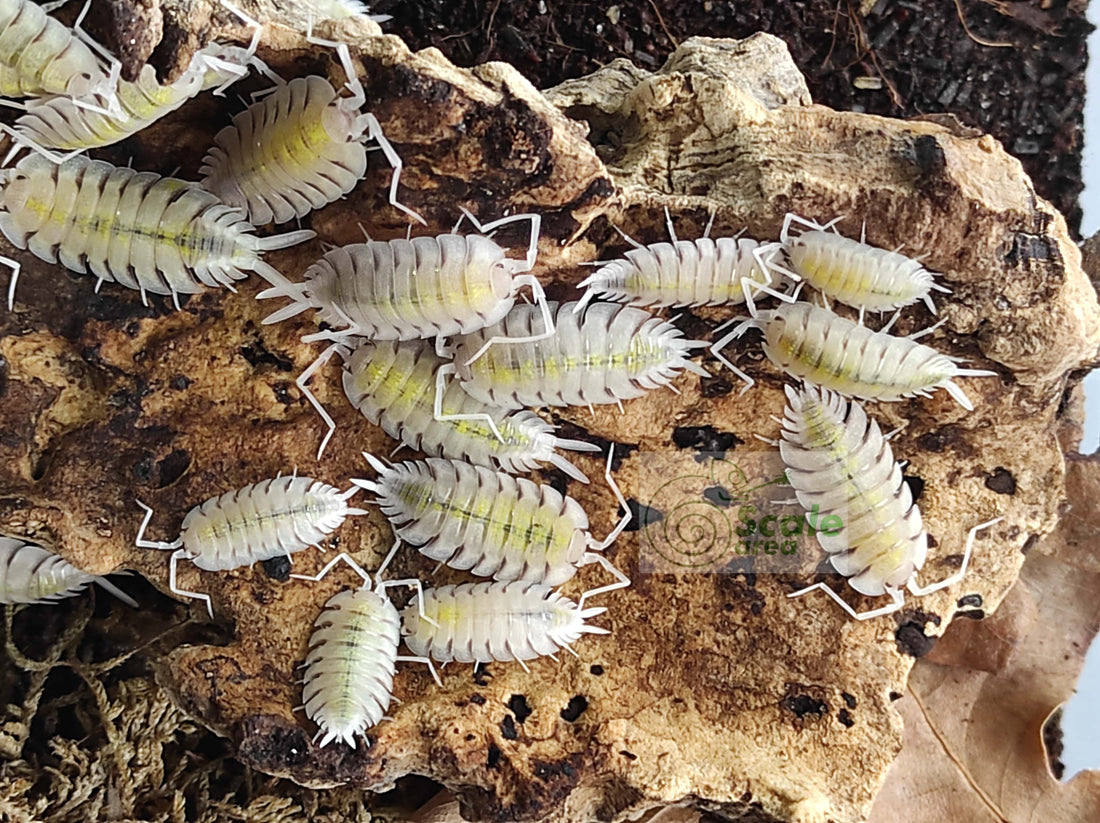What is an Isopod?
Isopods, also known as mealybugs or ball bugs (although not all are capable of rolling into a ball), are crustaceans that form more than 10,000 different species.
Unlike insects that have a chitin exoskeleton, these are covered in calcium carbonate, which is why they are a great natural source of minerals for our reptiles.

They can also be kept as a pet, especially some somewhat rarer and more striking species, which is why there are also species considered to be collectibles. It is very entertaining to see how your isopod colonies evolve and discover new specimens and colorations.

What do isopods eat? How to feed my isopods?
They decompose organic matter, they feed on everything, including animal droppings, dead insects, reptile moults, etc., which makes them ideal for cleaning your bioactive terrarium.
It is important to provide them with dry leaves, as they love to hide among them as well as eat them, so they will never run out of food. Some of her favorites are: walnut, mulberry, oak, cherry, rose bush, bramble, chestnut...

They also really like vegetables or peeling them, especially carrots, they usually like them a lot, as well as some fruits such as apples or pears.
I always have a cap with food for tropical fish, gammarus for turtles, dog food, some seeds, rabbit food, wheat bran, etc.

They should always have a cuttlefish / cuttlefish / cuttlefish bone available, to provide them with calcium.
What does the isopod terrarium have to be like?
In this section I am going to generalize, since each species is going to have its ideal conditions, but almost all of them are very similar.
The simplest is a drawer or plastic box with about 3 fingers of substrate. On this we will put abundant dry leaves, a cuttlefish bone, a feeder (so that the food is not in direct contact with the substrate and it grows mold) and hiding places (cork bark, half a coconut, egg cups, moss etc.)


On our website we have very cheap complete terrariums ideal for the maintenance and reproduction of isopods:


You can order it at https://www.scalearea.com/products/kit-terrario-cria-de-isopodos with 24h shipping.
What substrate do isopods need?
The substrate will consist of a mixture of 50% coconut fiber, 40% universal substrate, 5% vermiculite and 5% garden soil, the latter two are not essential, but highly recommended since isopods absorb many minerals from the soil through part of the calcium It can be mixed with pieces of dry leaves, reptile saplings and rotten wood.

How do isopods reproduce?
The reproduction of isopods is sexual, after copulation the female will store the eggs and embryos in the marsupium (a space inside the mother in which she protects her young from drying out and has nutritional elements as well as antibacterial elements). Once the pups are ready, they are expelled abroad, being very similar to the adults, but small in size. In a few months they will be ready to reproduce and continue to increase the colony.
If you want to buy a colony of isopods on our website we have a multitude of species, of all prices, colors and sizes:
https://www.scalearea.com/collections/isopods .



All this and much more at www.scalearea.com Any questions, ask us without obligation!

